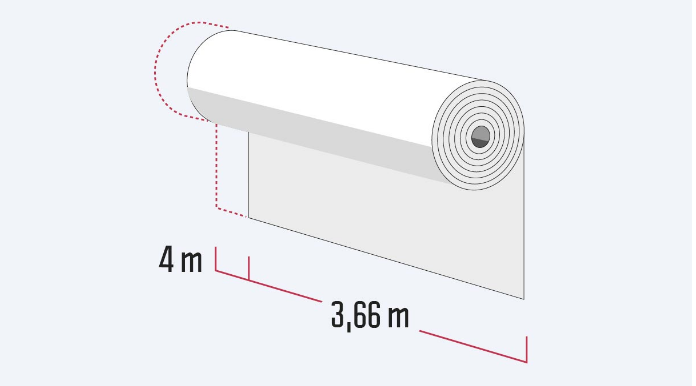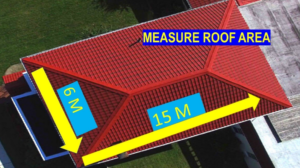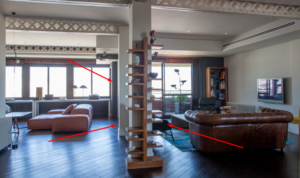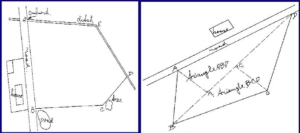The good result in the installation of a wall-to-wall carpet or a floor covering is subordinated to the correct calculation of how much carpet we need to cover the surface. It is not just a matter of measuring lengths and widths, we must know the shapes of a room, how to order the required amount and know those critical points that can cause the calculation to fail.
Step by step
To carpet a single room, the surface area of the room must be calculated. But if you want to carpet the whole house, you have to measure the surface area of each room and corridor, then add them together to get the total surface area to be carpeted.
Calculate the area
Regular shaped surfaces
Measure the length and width of the room and multiply the values obtained. The result is the number of square metres to be covered: 2 m (length) x 3 m (width) = 6 m2 (total area to be covered).
Irregularly shaped surfaces
Rooms with complex figures should be broken down into regular areas, such as squares or rectangles. Then calculate the areas of these shapes separately and add them together. The result of this sum corresponds to the total area of the room where the carpet will be installed.
This space is composed of a rectangle (surface ‘A’) and a square (surface ‘B’):

Calculate surface area ‘A’:
3 m (width) x 5 m (length) = 15 m2 (surface area rectangle ‘A’).
Calculate surface area ‘B’:
2 m (width) x 2 m (length) = 4 m2 (square surface area ‘B’).
Calculate total surface area (‘A’ + ‘B’):
15 m2 (surface area ‘A’) + 4 m2 (surface area ‘B’) = 19 m2 (total surface area to be covered)
Surfaces with diagonals
When the surface of the room includes diagonals, it is decomposed into regular areas. For the area with diagonals, project the figure into a regular shape, such as a square or a rectangle.
In this figure there is a rectangle ‘C’ of 2m x 4m. Where the diagonal is, project the figure to form a rectangle ‘D’ of 1m x 2m. The total area of this room will be the sum of the area of rectangle ‘C’ plus half the area of rectangle ‘D’:

Calculate area of surface ‘C’:
2 m (width) x 4 m (length) = 8 m2 (surface rectangle ‘C’).
Calculate surface area ‘D’:
1 m (width) x 2 m (length) = 2 m2 (rectangle surface area ‘D’).
Calculate total surface area:
8 m2 (surface area ‘C’) + (2 m2 / 2) (half of surface area ‘D’, i.e. surface area of triangle) = 9 m2 (total surface area to be covered).
Calculation according to carpet type
For the calculation to be accurate, you must consider whether the carpet is patterned or plain, and the direction of its texture. Once the type of carpet has been chosen, we must calculate the position in which it will be installed and where the cut-outs will go.
Plain carpet in one colour: it is more efficient because the position of the cuts is irrelevant.

Patterned or multi-coloured carpet: work out that each joint of the pieces matches the pattern or colours.

Carpet with long pile: the joint must go in the direction of the pile.
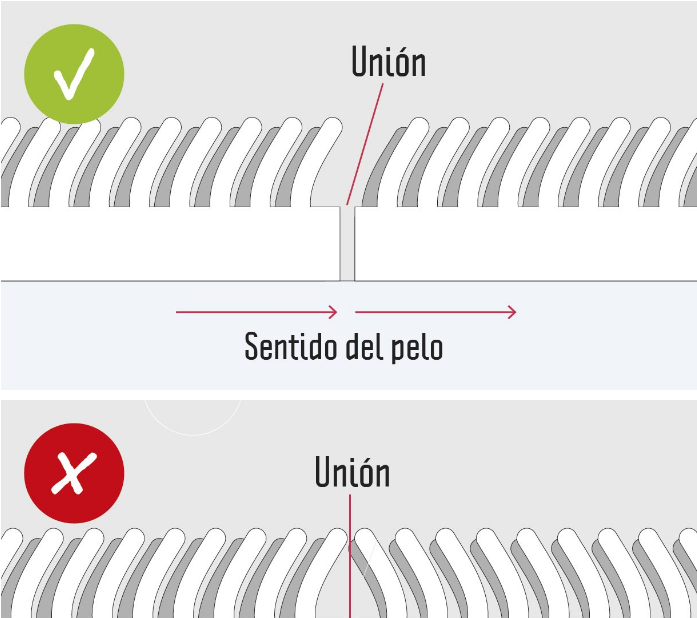
Dimensions of the rolls
Wall-to-wall carpets or floor coverings come in rolls. The width of that roll determines the width of the carpet and, therefore, one of the measures to obtain the m2 needed. Depending on the width of the roll, we must calculate the length to be ordered, in order to obtain the amount of m2 you want to carpet.
Example: if you want 24 m2 of carpet and the width of the roll you have chosen is 4 m, you should apply the following calculation: 24 ÷ 4 = 6 m (length to be purchased).
As it is likely that the width of the roll will not be the same as the width of the room, you should plan the joints between pieces very well, so that they are hidden by furniture or in inconspicuous places.
Roll width
These are some of the widths available at Homecenter Sodimac:
Carpet: 3.75 metres wide

Floor covering: 4 metres wide

Hallway carpet: 0.67 metres wide

Carpets on request (products with delivery time): can vary between 3.66 and 4 metres in width.
